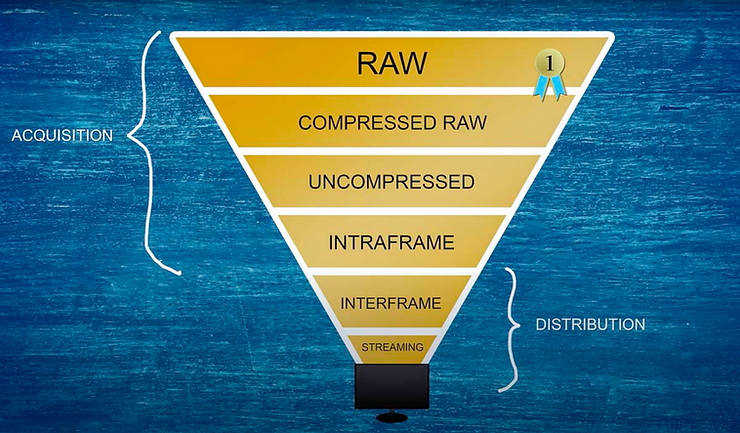Recording in RAW Video
The last two decades have brought a complete change in how video is recorded onto a memory card, and that is RAW format. This revolution has allowed cameras to make changes in the color and gamma and many other important characteristics that are not actually embedded within the video signal. Instead, they are saved in what’s called metadata. Metadata is essentially a narration of the video clips which can be altered freely later on in the post production workflow. In layman terms, metadata in its most basic form is information about information.
What is actually being recorded from your camera and onto a memory card is a RAW message of information without any adjustments baked-in. It’s a straightforward concept of adding notes to recorded footage which tells the editing software “when you view this video, add these adjustments to it”. When you record in this fashion, it is called RAW. Let’s take colors for example; RAW means that the information recorded of the reds, greens and blues are original in that they are not modified in any way. In saying this, RAW is not actually video until it is processed in some manner because it isn’t viewable in a way that video is. If the video footage were to be stored in ProRes, then the values of RGB are preserved in the photosites (the only light sensitive collectors in your camera) which are then converted into pixels. In a RAW state, the RGB color information is non interpolated or non deBayered meaning RAW can be compressed in some way, but as long as the valued information is not tied into the footage itself, then it is RAW. Now, how much of this information is ‘baked in’ largely depends on the type of camera you are using. Look at the diagram below as an example:

What is RAW Video Footage
Image by Wolfcrow
RAW can be thought of as a digital negative, meaning that this information is only capable of being recorded as it came in through the lens. In essence, a digital negative is not directly used as an image right away, although it has all the information needed to create a viewable, tangible image. In film photography, the process of this conversion is called developing an image. If we were to compare it to a film negative and going through the steps of making a print, then we are able to make decisions of how much exposure we want along with making decisions on the balance of color. This addresses RAW in the same way that we are able to correct the exposure and color balance in post production when we color correct and color grade.
The basic means of RAW is to record all the information coming from the sensor mainly unchanged while at the same time recording the metadata to alter creative expressions later on down the line. Because this information is recorded separately, the image may have a wider depth of dynamic range or color gamut that is preserved absolutely with minimal loss of information. This metadata, that is simultaneously being recorded separately, then has the power to alter a variety of information such as ISO, color saturation, white balance, gamma and the list goes on. Metadata also stores information such as the lens used, the focal length at which the information was captured, aperture, date of the recording and slate data.
Now, one issue with RAW is that there is no ‘industry standard’ as every company producing RAW formats have their own variant of it. For example, the well known camera company, RED uses .R3D Redcode RAW, Arri distinguishes theirs as ArriRAW and Blackmagic design Cameras use CinemaDNG similar to that of Adobe, the editing software. You’ll find that this standardization is hampered by companies not wanting to give away their finely tuned and highly researched science behind their own versions, their secret sauce. Simply put, a camera manufacturer will never let you have an image without their unique identity on it.
With a ton of misinformation running around the internet regarding RAW being the best possible format, this is simply untrue. There is ALWAYS some kind of processing that happens and so the quality of your image largely depends on the quality of your sensor and the color consistency in which is produces. RAW is not necessarily an ideal format for all your filming needs. Just because your file is RAW doesn’t mean you have access to near flawless information from the sensor. You’ll find numerous films are shot in 4:4:4 ProRez and in-fact most raw systems record 4:4:4 color. So, why use RAW at all? RAW video format is only one third the size of a full raster image, and this saves a ton of space! As content creators, we all love this… and since the color values are not baked in, the end result will leave you with more room to process the colors in which you desire.

